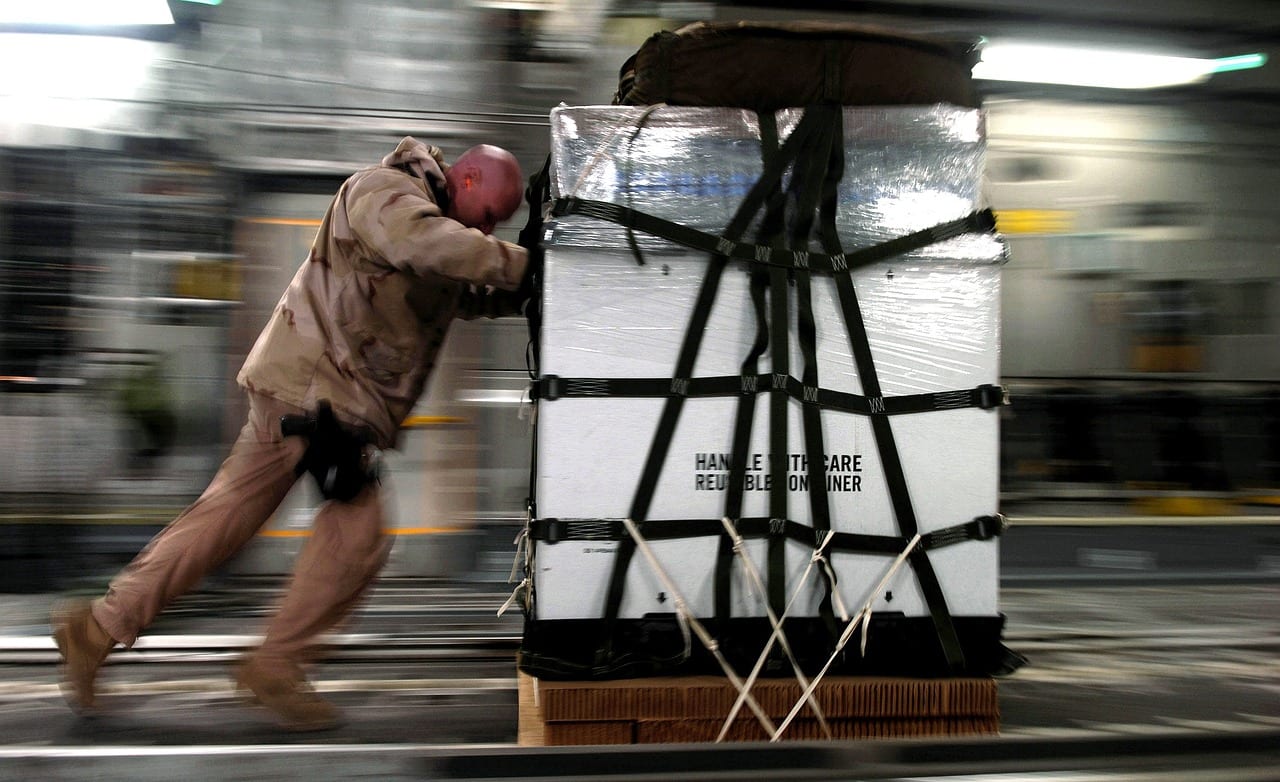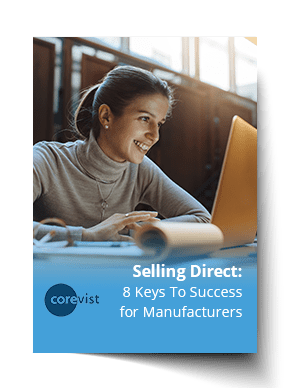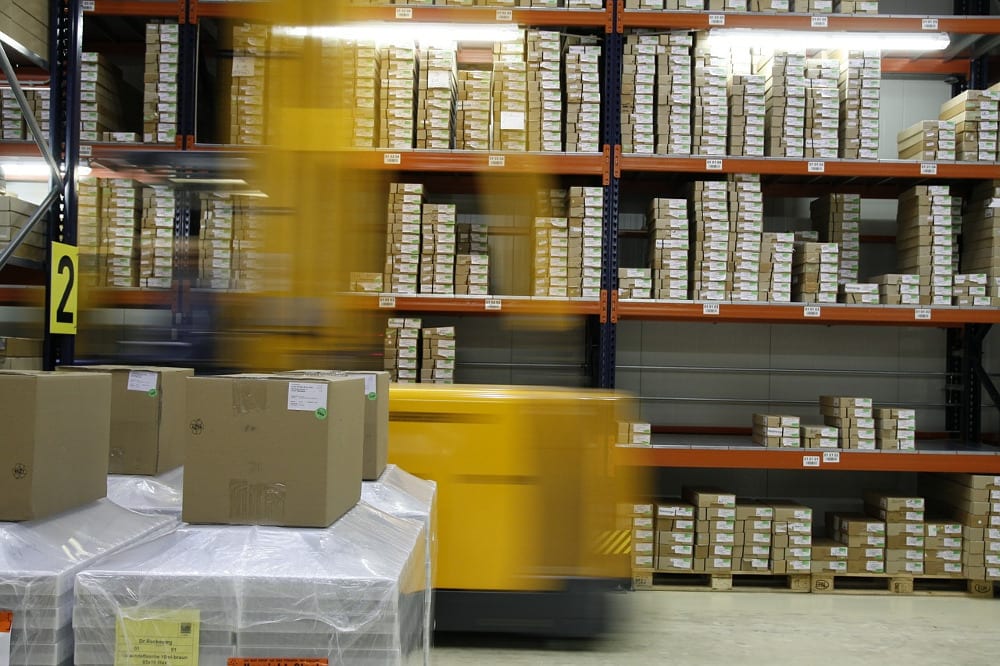Share
Author
George Anderson
Share
Last updated: Oct 21, 2020
The world of manufacturer e-commerce is changing fast. Between the COVID-19 pandemic, supply chain disruption, and increasing pressure to shift to digital, manufacturers are scrambling to define GTM (go-to-market) strategies that are relevant in the digital age.
In particular, manufacturers are optimizing their distribution strategies by selling directly to consumers alongside traditional B2B channels.
How can manufacturers sell directly to the consumer–without precipitating a collapse in their distribution channel?
Launching a D2C channel is a delicate undertaking, but you can definitely achieve it. The key is a smart approach that considers all repercussions (and plans for them).
First off, here’s a quick story from one of our clients–a company that discovered a novel way to sell directly to the consumer.
Our client’s challenge: A product with a short shelf life
Our client, a global pharmaceutical company, was forced to sell directly to the consumer with a major product that had to stay frozen. Their existing distribution channel didn’t have the ability to manage the support of that product, which has only a week of shelf life after thawing. The challenge which our client encountered was the timing of that thaw. The distributor was not equipped to keep the product frozen and execute the thaw—only the manufacturer could do that.
Both shipping and communication about the product had to go through multiple stages. The consumer had to order the product from the distributor. The distributor had to order from the manufacturer. The manufacturer had to ship to the distributor, and the distributor had to ship to the consumer. Since thawing began when the product left the manufacturer, not when it left the distributor, the product often got to the customer with little to no shelf life remaining.
Clearly, our client needed to eliminate this issue and serve the end user better. They needed to sell directly.
NEW Report:
8 Keys To Selling Direct
Every manufacturer is grappling with the D2C question (direct to consumer). Here are the keys to successful D2C. Read now.
The solution: Selling direct to consumers (while embracing distributors!)
Our client developed a novel solution. They figured out a way to sell directly to the end user—while still keeping their distributor happy. Our client built an e-commerce website which allows buying direct from the manufacturer through self-service. The thawing process for the product doesn’t begin until an order is placed. Our client, the manufacturer, ships the product directly to the consumer.
But what about their existing relationship with the distributor? The good news–our client has maintained that relationship even as they have moved to a consumer-direct model for this product.
Here’s how. Our client solved the warehousing, manufacturing, and distribution problem. But the one issue they didn’t feel they could solve on their own was the payments problem. The end users were accustomed to paying the distributor via credit card, but our client, as a manufacturer, only took bank transfers.
The solution was to engage the distributor to process end-user payments and notify the manufacturer of order placement. The manufacturer ships orders directly to the consumer and sends an invoice to the distributor (who collects payment). Due to the short shelf life of the product, the distributor never handles the product physically. There simply isn’t enough time. Since the distributor now plays a reduced role in the process, the manufacturer offers the distributor a smaller cut of the margin, since the manufacturer does the actual work of getting the product to the end user.
Isn’t the distributor still upset about this? Actually, no. This product is a hazardous material with special handling requirements. The distributor gets a fair cut for doing the legwork of communications and payment collection, but they don’t have to handle the hazardous material. It’s a win-win situation for everyone involved.
The result: A manufacturer equipped to go fully direct to consumer
Though this endeavor distributes one product with a limited shelf life, the manufacturer has made huge gains in technology and business intelligence by launching this limited distribution channel. If and when they decide to sell directly to the consumer across multiple segments, they’re prepared. (Hint: it’s probably a matter of when, not if.) They’ve put in place the infrastructure to sell ALL their products to the end user directly, and they have the end users’ contact information to market an all-inclusive sales channel.
Even more importantly–this manufacturer has picked an area in which to go fully direct, and they’re learning. That experience will pay dividends in the future. Which leads us to…
Why sell directly to consumers?
To survive down the road, manufacturers need to gather intelligence now. They can’t rely on distributors to tell them what the market is buying or not buying. Somewhere along the line, manufacturers must sell direct to consumers.
E-commerce is a great way to do that.
E-commerce empowers manufacturers to sell direct to the consumer. That’s the holy grail: cut out the middleman, and you bring back margins that you had to give to the middleman. If you can figure out a way to do it that costs you less than the middleman’s cut, then that’s a huge win for your organization.
That’s one benefit. But not only do you get better margins—you also get real-time visibility into demand because you’re closer to the consumer. In addition to quantitative demand for product, you also get visibility into qualitative demand. By studying customer data and engaging in communication, you can find out what new features your customer want in your products. You can also discover opportunities to develop ancillary products that your customers desperately need to go with big-ticket items.
Manufacturers selling direct to the consumer is the holy grail for B2B companies. When you sell directly, you take total control of your business, from the start of the supply chain all the way to the consumer. But with that power comes plenty of responsibility and roadblocks. You need to develop a deep understanding of the difficulties which will face your unique business as you move closer to the consumer.
What difficulties do manufacturers encounter when they act as distributors?
Minimum shipping quantity
One of the biggest reasons manufacturers go through distributors is minimum shipping quantity. Manufacturers like to ship in truckloads of product. A typical manufacturer’s warehouse is set up to leverage economies of scale and move the largest amounts of product as possible in the shortest time possible. The value that distributors bring to manufacturers is breaking out truckloads, pallets, and cartons and shipping them elsewhere.
That’s a huge obstacle for manufacturers. If they want to enter the distribution business, they have to shift their thinking. But we’re seeing a trend, as manufacturers experiment with B2C, in which they’re also changing their distribution capabilities for the better. They’re becoming nimbler as part of this experiment. It’s good for them.
Payment methods
This distribution challenge is closely tied to minimum order quantity. Because they prefer to ship such large quantities, manufacturers get paid via electronic transfer. Distributors ship small quantities and generally accept more payment types, including credit cards. Manufacturers don’t know how to handle those small, individual transactions—and they may be concerned about PCI compliance for B2B. However, it’s important to note that numerous vendors exist to help B2B companies take credit card payments securely.
Digital commerce platform and marketing
A digital channel in the form of B2B e-commerce is a must for manufacturers who want to go direct to the end user. Yet direct-to-consumer channel has historically remained a big obstacle. Many manufacturers are beginning to build e-commerce stores, but the market is by no means mature.
Of course, the e-commerce platform is just the technology—just a tool. What do you do with that tool? In many industries, manufacturers must expand their marketing activities to include the digital channel. This expansion usually takes the form of merchandising on the e-commerce store, running promotions, and leveraging customer contact information for personalized marketing. This is a challenge for manufacturers, who have historically only thought about moving product in big quantities. The good news is that manufacturers are starting to hire B2C e-commerce marketers who have the expertise to help manufacturers reach this new market.
Keeping distributors happy
Perhaps the largest strategic question manufacturers face is, “Do we really want to break relationships with our dealers and distributors? Are we going to piss them off by going direct?”
As manufacturers enter distribution channels, they must answer this question.
If you believe that going direct to the consumer will break your relationships with distributors, then you’d better get ready to go direct, because the distributor is going to pick up a competitor’s product. You need to weigh this risk carefully against the value that the distributor is providing. Generally, the distributor is not marketing your brand for you, and they’re not merchandising. Does the gain of going direct (and controlling your marketing) outweigh the loss of the distributor relationship? There is no right answer. Manufacturers need to understand their markets and what a break in distributor relationships could mean for them.
How can manufacturers get started retailing their own products directly to consumers?
It’s helpful to take a page out of B2C here. In B2C e-commerce, we don’t often hear the word “distributor,” at least not with the same meaning it has in B2B. Rather, we hear the word “merchant.” A merchant is simply someone who sells a product. That’s a crucial mindset shift. As manufacturers start to view themselves as merchants, everything changes. You’re selling your product. Who wants it? How do you reach them? The answer may be simpler than it seems at first glance.
However, adding direct-to-consumer retailing still feels like a massive undertaking. It’s complicated, technical, and strategically delicate. The key is to start somewhere, not everywhere. Define a specific geographical area that’s isolated. If you’re going to distributors in one market, and the distributors recruit dealers who sell directly to consumers, find a part of the world where you can cut out the distributor, go dealer- or consumer-direct, and experiment.
Start there, make mistakes in a low-risk environment, and learn. An experiment like this empowers you to break into new territories and new markets in “fail-early” mode. You can take everything you learn from an isolated case and expand your e-commerce efforts to more markets down the road.
Want more?
Download our new report:
8 Keys To Selling Direct
Every manufacturer is grappling with the D2C question (direct to consumer). Here are the keys to successful D2C. Read now.








